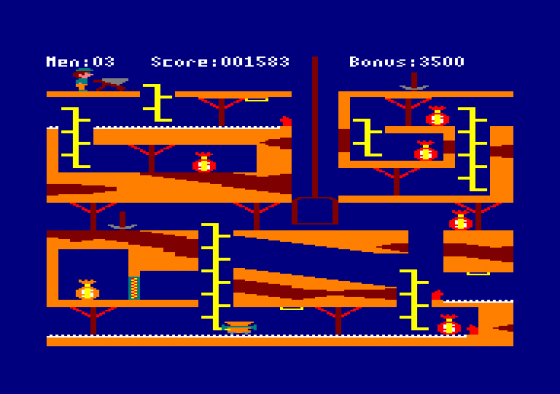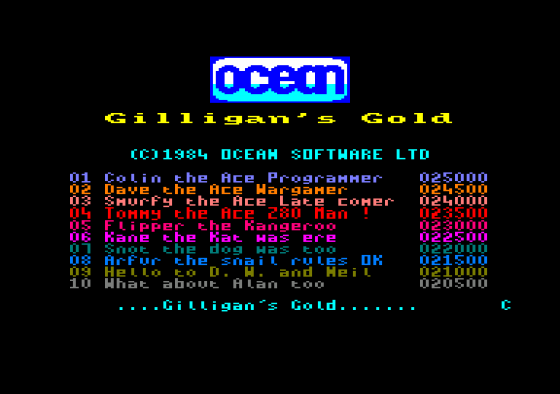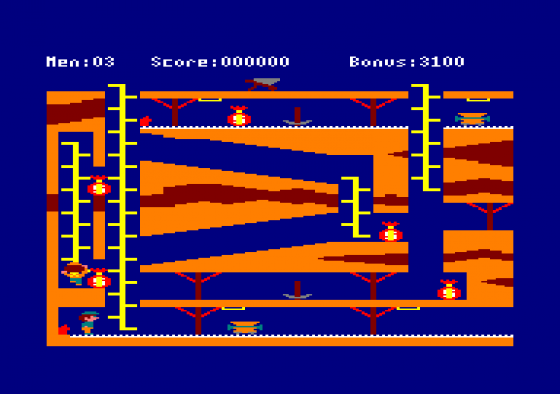
Amstrad Computer User
 1st May 1985
1st May 1985
Categories: Review: Software
Publisher: Ocean
Machine: Amstrad CPC464
Published in Amstrad Computer User #6
Gilligan's Gold
Gilligan's Gold is based on an arcade game that I remember seeing in a pub a while back. The idea seemed quite good but our august editor informs me that the game never really caught on. It could loosely be described as a platform and ladders game, the object being to tear around a mine attempting to collect sacks of gold that have to be returned to a wheelbarrow at the top of the first screen, the first few sacks are reasonably simple, being quite close, but those on the other screens have to be brought back quite a way, past several obstacles, and are therefore a little tricky.
The task is made harder by the fact that a bonus counts down as you try to get a sack to the wheel-barrow and, on reaching zero, your little man loses a life. The count is replenished by successfully returning a sack.
To further hinder your attempts to amass a fortune, several robbers are also hungry for gold and will not hesitate to attack in order to take a sack that you're carrying. It is possible to attack these characters for a short time after you have picked up one of the pick-axes that are lying around (in much the same way as barrels could be smashed in that old arcade classic, Donkey Kong). The pick has another use, to allow you to access one sack that is hidden behind a rock-face that must be broken down.

Gold trucks run up and down short sections of railway line. These can be either a help or hindrance. It is possible to hitch a ride by dropping into one as it goes past, but you may also be knocked down, causing an inevitable loss of life. Movement up and down can either be made using the lifts or climbing the ladders, though you must be careful not to fall down an empty shaft.
Playing the game is fairly easy, but one niggle I have is that you must be exactly 'lined up' in order to get off a ladder at a particular level when being chased by a robber. This will often lead to an unnecessary loss of life.
The one major criticism that I have, concerns the number of screens - there are only three! I cannot understand why more were not included - it is surely just a matter of increasing the size of a data table. The use of colour is also a bit limited; in fact the scrolling high-score table is more colourful than the actual game, though the game does work well on a green screen. And what happened to the sound? A strangled parrot-squawk every time someone drops, doesn't exactly stretch the 464 to its limits. All in all then, the idea is pretty reasonable, but I'm not sure if this particular implementation is all that it could be, though I did find myself going back to try again.




